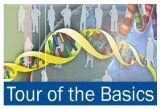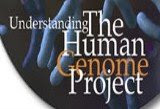Wandering the snowy plains of Siberia up to 40,000 years ago lived not one, but two groups of long-haired and curly-tusked woolly mammoth, side by side.
An international team led by Thomas Gilbert at the University of Copenhagen in Denmark has sequenced five new complete genomes of mitochondrial DNA (mtDNA) of woolly mammoths (Mammuthus primigenius ). The tally of complete mtDNA genomes for this hairy beast now totals 18. The work is published in the Proceedings of the National Academy of Sciences (1).

Cold counterparts? Siberia's mammoths seem to have been split into two distinct groups (Image Credit: Britannica.com)
Gilbert and his team subjected five hair samples to a new technique that allows entire mtDNA genomes to be sequenced from a single piece of hair 2. His haul, when added to 13 previously-sequenced samples provided enough distinct samples to show that the woolly mammoth existed as two groups, or clades, originating from a common ancestor.
The two clades lived in the same place at the same time — although the mammoths from one clade stuck to one small area, and died off much sooner than their relations in the other clade.
Like mother, like childThe DNA in mitochondria is passed only through the mother’s line, and doesn’t give information about changes in gene function, as nuclear DNA can. But it is useful because it doesn’t change from parent to offspring, making it easy to show when different animal groups are present.
Gilbert and his co-workers found that the mtDNA sequences were obviously different between the two clades. They then looked at the geographical locations of the different beasts, and used carbon dating methods to deduce when the animals lived. “You can see that you get both groups in the same place at the same time,” says Gilbert. But the two groups had quite different tendencies to roam. One group “is quite geographically limited”, says Gilbert. It stayed in the middle of the high Arctic, whereas the other group wandered much farther afield, he says.
Carbon dating shows that mammoths in the group with the limited range became extinct around 40,000 years ago, whereas the wider-ranging mammoths were still wandering the same areas until around 10,000 years ago.
Gilbert points out that carbon dating can have wide error margins, so we will never know with certainty that both groups were there at the same time. “We can’t get any closer [without] going back in time and seeing.”
Hairy dataThe work shows the usefulness of the technique to get genetic information from hair — previously thought to be a very poor source of DNA — says Adrian Lister, from the Natural History Museum in London, UK. But the question of groups and species will take a while to work out, he says. “It is too soon to say if the mitochondrial clades represent two groups, subspecies or, at the extreme, species,” says Lister. “The genetics has not yet been related to morphology."
Without nuclear DNA analysis, Gilbert can’t answer this question, but he is working on this now. “It’s really hard to call,” he says, but he thinks that the mtDNA work hints at something more than just groups of different mammoths. “My hope is that there are two different subspecies,” he says.
Reference:
(1) Gilbert, M. T. P. et al. Proc. Nat. Acad. Sci. USA advance online publication doi: 10.1073/pnas.0802315105 (2008).
(2) Gilbert, M. T. et al. Science 317, 1927–1930 (2007).
---------------------------------------------------------------------
Nature News: http://www.nature.com/news/2008/080609/full/news.2008.881.html
.jpg)
.jpg)
.jpg)

.jpg)
.jpg)
No comments:
Post a Comment